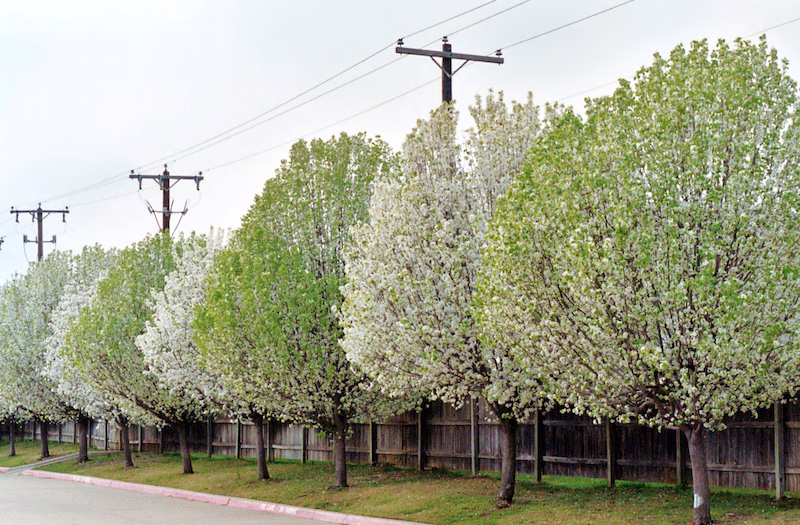With their white blooms, Callery pear trees are most obvious this time of year. This highly invasive tree threatens native wildlife and causes difficulties for private and public landowners.
Homeowners are invited to cut down their Callery pears and receive a free, non-invasive tree at upcoming buy-back events in the Kansas City & Northeast Kansas areas.
Deep Roots, in partnership with Evergy, Johnson County Parks & Recreation District, Kansas Forest Service, Shawnee County Parks & Rec, and Missouri Invasive Plant Council will host a series of Callery pear buy-back programs.
Free replacement trees will be provided to registered participants at the selected location on the day of their selected location’s event:
- Lee’s Summit–April 22, 2023, from 10 a.m. to 1 p.m.
- Topeka, KS–April 22, 2023, from 10 a.m. to 1 p.m.
- Lenexa, KS–May 20, 2023, from 8 to 11 am
To be eligible for a free replacement tree, participants must register for the event, choose their location, and email a photo of themselves next to their cut-down Callery pear to Deep Roots.
Participants will receive potted replacement trees in 3-gallon containers that stand between 4-5 feet tall donated by Evergy, and sourced through Forrest Keeling Nursery.
Tree availability will be first come, first serve. Options include serviceberry, redbud, white flowering dogwood, american smoke tree, swamp white oak. bur oak, fragant sumac, and bald cypress.
Native to China, Callery pear trees (Pyrus calleryana) include 26 cultivars that present significant ecological concerns in Kansas and Missouri. Some of the most common cultivars offered commercially include Aristocrat, Autumn Blaze, Bradford, Capital, Cleveland, Chanticleer, Red-spire, and Whitehouse.
Callery pear limbs generally grow vertically, forming a pyramid or egg shape. Typically, in early April, very dense clusters of white flowers cover the tree before leaves form. In maturity, they reach heights of 30 to 40 feet. Property owners should cut trees during spring when they are easy to identify, to reduce populations from spreading in unwanted areas.
Individual cultivars generally do not produce fertile seeds on their own. However, insect pollination of flowers with other cultivars on nearby properties can produce fertile seeds, carried by birds, that sprout and establish wherever they are dispersed.
Each year, older trees in urban landscapes produce viable seeds that contribute to growing infestations. Breaking this cycle begins with choosing native, non-invasive alternatives for future plantings and controlling existing invasive populations.
For more information about this event, visit deeproots.org.
